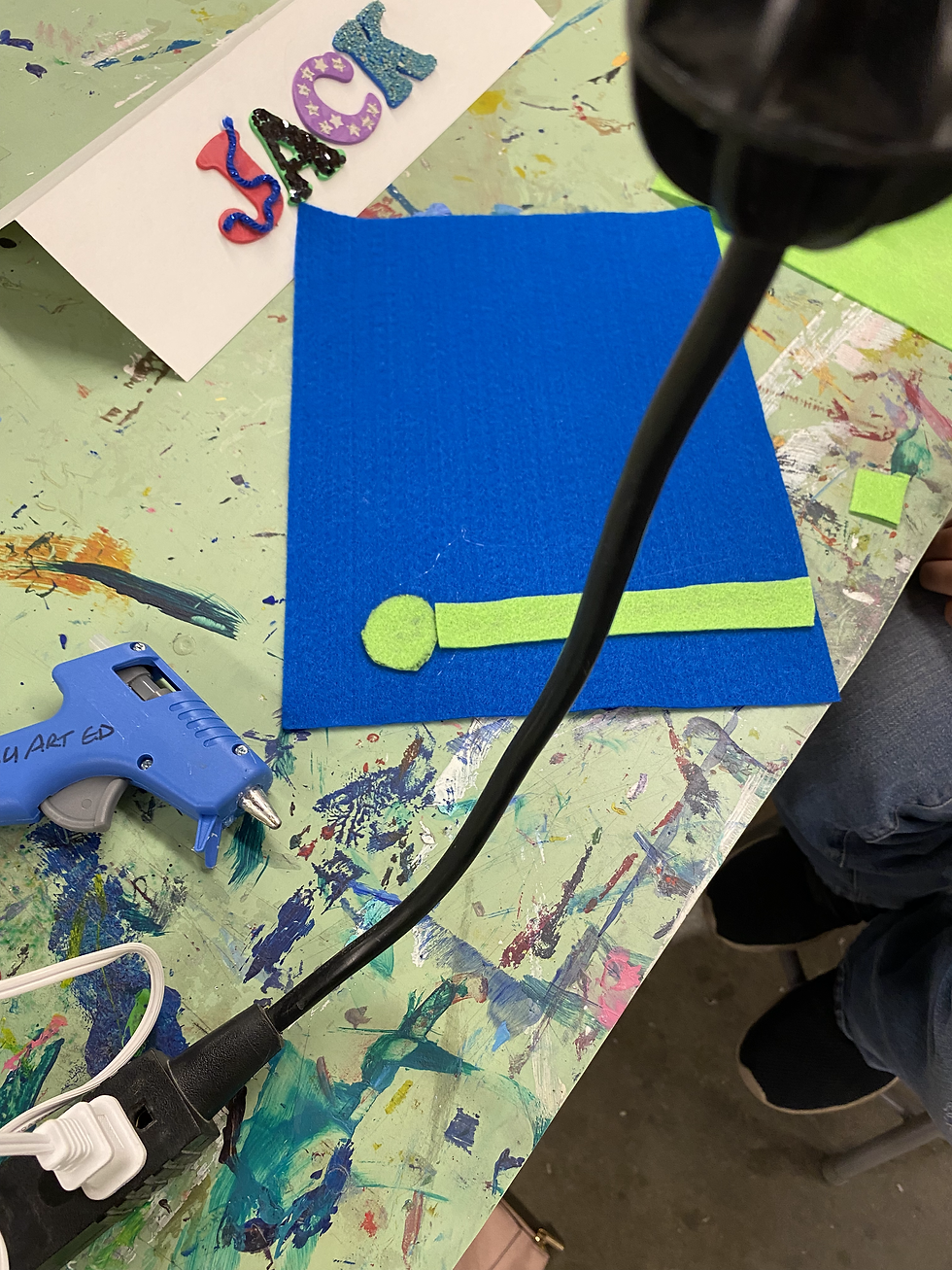Lesson 4 aros2
- maleavitt44
- Nov 15, 2021
- 3 min read
November 10th, 2021
What Worked Well / Interpretation/Content Meaning:
This was our fourth meeting with our Artistic Abilities students, and we had a few students missing meaning that we only had 6 individuals present for this lesson. This lesson was very different from our previous lessons in terms of thinking and how the students built their 3D objects. That being said there were some really great positives and a few negatives about this lesson in general. I think this lesson really pushed students out of their comfort zone and allowed them to think of how to structure something. The color aspect also allowed for us to have several meaningful conversations about colors and how to utilize colors to express yourself and your feelings. This lesson also was very positive in it allowed the students to play and get used to our materials as we were using them, in fact we did ideation activities with several students to plan how we wanted things to look before we glued them down which was a great process and really allowed students to envision their final product. I think utilizing even more ideation and material planning moments the students can develop their product from not only the prompt but from the materials themselves.
What Did Not Work / Personal Significance:
As stated there were a couple of issues that arose during this lesson, they were small but they were also very helping in thinking about potential differentiation. The students struggled with gluing their sticks together, they seemed focused on them laying flat rather than them becoming a form, but taking time to work individually and prompt them into how do you think you can build this? Or what shape do you want to use? Really allowed for them to think about it and achieve the end result. This was something that was manageable but unexpected in the results. After talking with Alison we realized that when doing the steps in a lesson plan its very important to anticipate the areas that might cause more issues to differentiate better for our students. She said that the best way to practice that skill is to speak simple tasks allowed and explain all of the steps, because then it is easier to really identify what may be harder. That was a very helpful tip, and it made me think about the step by step way of thinking that should be incorporated into our lesson plans. Moral of the story is that you may not always know what students may struggle with, but it is easier to anticipate if you really break down the ideas and language you are planning on teaching.
Future Actions: In the future, I will really focus on the smaller details of lesson planning like language, these small sections can have big impacts on how you teach and how students learn that material. By utilizing those techniques more clearly it can allow me to identify potential problem areas in advance and really have a more solid plan for those students to accomplish in a way that is better for how they learn. I plan on continuing to test out these different methods of teaching and instructional techniques to help me become a more holistically based educator when it comes to lesson planning so that my students have the best tools available to them.
Documentation:

This student is planning out the steps she needs to make her 3D form by placing the sticks together prior to adding glue. She was nervous to move onto the gluing so I suggested to practice with her materials first, she was more confident in her steps after she did a test of her plan.

This student was very into the contrasting shapes (squares and triangles) and colors (red and blue) of the materials she used. She used these materials to symbolize hot and cold because blue makes her feel cold and red makes her feel warm, which represented her feeling coming from outside to the inside on the day we did this project.

This student struggled with how to create his 3D form, we watched several demonstrations and walked through the steps together. A student next to him was making a 3D form using pyramids and by watching her this student was able to do the same thing. This was a great example of how table work and peers can be one of the most helpful teachers to other students.

This student completed her 3D hanging form and was very proud of how she used colors and symbols to tell a story about nature and her own emotions. She said she really liked the use of different colors in her piece because it allowed her to really think about how the colors worked together.

Comments